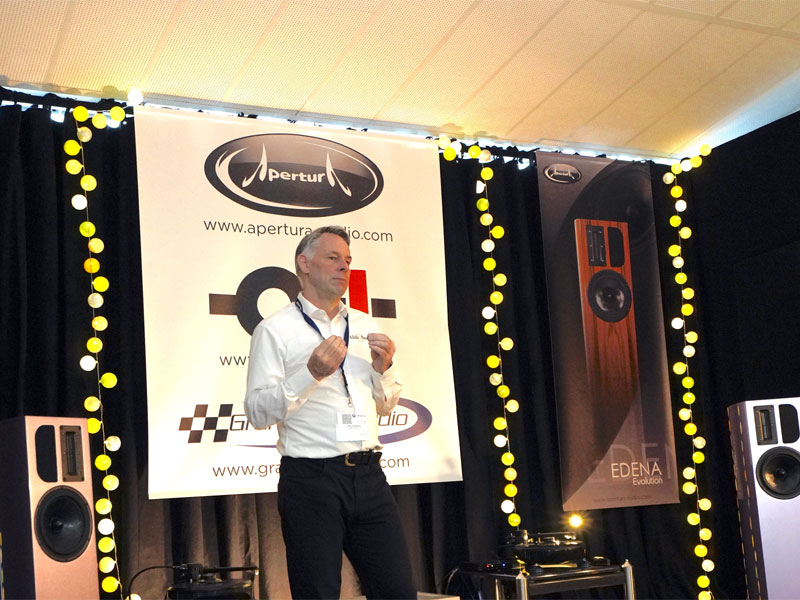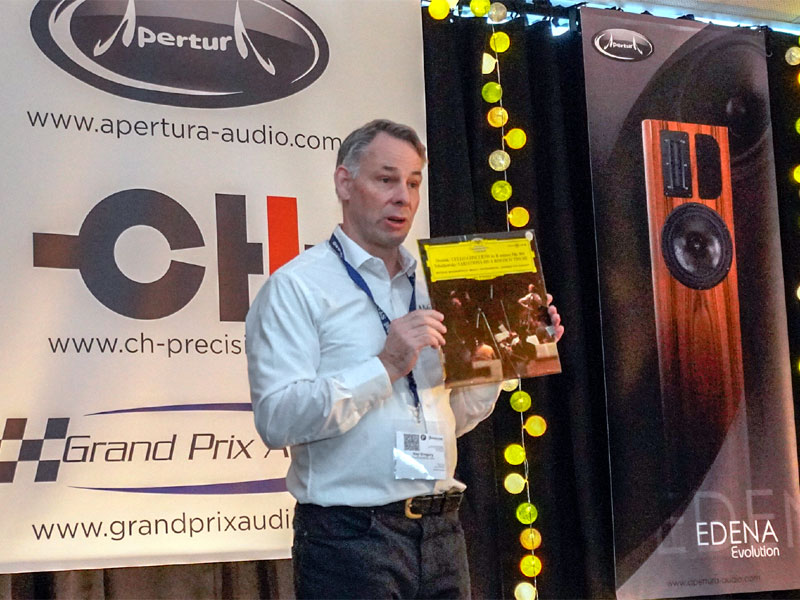High End 2018 • TABlog
In theory, a record-industry accord, signed by most major labels in 1954 agreed to the universal adoption of the RIAA EQ standard, with a target of complete compliance by the end of 1958. This means that (again, in theory) the only record-replay EQ you need for any record pressed after 1958 is RIAA -- a supposition enthusiastically embraced by the vast majority of electronics manufacturers, not least because it makes their lives considerably less complicated. The problem is that there is considerable evidence, anecdotal and sonic, that, irrespective of the paper agreement, many labels or cutting engineers simply carried on as before.
Why does that matter? Because to physically fit a musical signal onto a microgroove record and trace it, you need to cut the bass frequencies and boost the treble when you cut the disc, applying the inverse boost and cut when you play it. Obviously, the precise details of those EQ adjustments must match perfectly or the signal will get bent out of shape. The problem is that every label had its own ideas when it came to the best EQ curve. Cut a disc with one curve and play it with another and the results are a tonal and musical disaster, affecting frequency response and phase relationships within the end result. The good news is that although most of the myriad separate companies had their own unique curves, they can be grouped into five basic sets -- curves that we dub RIAA, EMI, Decca, Columbia and Teldec (Deutsche Grammophon Gesellschaft) after the principle labels using them. What we set out to do was demonstrate just how big a difference selecting the correct replay curve can make, and just how late this problem persisted. At the same time, we wanted to show that far from being confined to old, rare or collectible records, this is a real-world problem affecting everyday discs in real-world record collections. With that in mind, we assembled a selection of records, detailed below, that demonstrated clear musical benefits from using the appropriate curve. Perhaps not surprisingly, given that selection process, in every case the discs showed really significant improvements, in some cases transforming them from barely worth playing to musically compelling. Of course, the wider the bandwidth (of the recording and system) the greater the difference, but even with Apertura’s compact floorstanding Edena Evolution loudspeakers, the musical benefit of using the correct curve (and which curve was correct) was blatantly apparent, the performance simply sounding more natural, the players like much better musicians, the orchestra or group like a much better band.
Now look at the dates on the records. Every one dates from after 1958, varying from 1959 right through to 1977. What that means is that major labels like Decca, EMI and Deutsche Grammophon Gesellschaft either never adopted RIAA or did so long after the 1958 adoption date, while others such as Columbia displayed patchy adoption and inconsistency, especially until 1968. With the advent of CD, the vast majority of record-pressing plants and cutting houses went out of business. Those that survived or reemerged, did indeed adopt RIAA, meaning that any 180-gram reissue, or any modern release, will use the standard RIAA equalization. If those are the only records you own or play, then that’s the only EQ curve you’ll need. But, as this presentation demonstrated, if you play records pressed in the '60s, '70s or '80s, particularly classical records but also jazz and pop too, then a range of EQ curves is a necessity if you want to really hear the performances captured in their grooves. Many thanks to Apertura, Grand Prix Audio and CH Precision for the generous access to their room and system. The equipment used was: Grand Prix Audio Monaco 2.0 turntable,
$37,500 Playlist Record 1, 1969 Record 2, 1959 Record 3, 1965 Record 4, 1971 Record 5, 1976 Record 6, 1977 |


